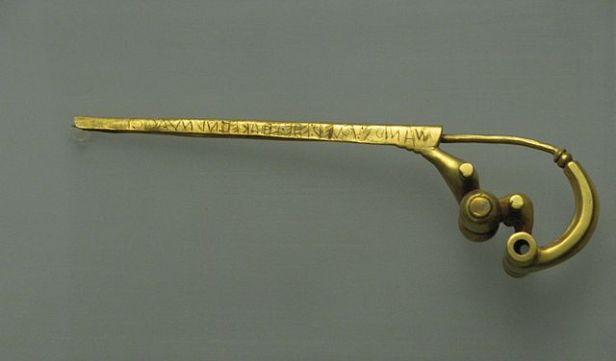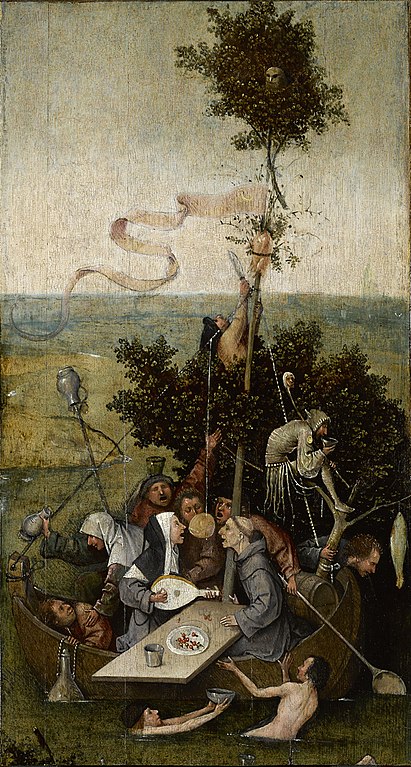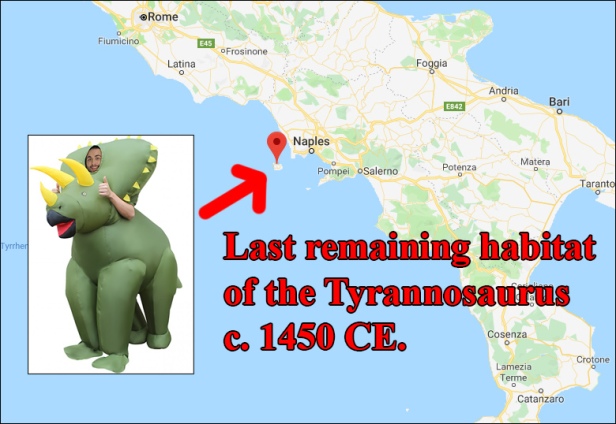I was planning not to write about this, for one simple reason. Gerard Cheshire’s recently published paper is so bad that it’s not worth the time and effort. Even engaging with it just by listing its many glaring flaws is doing it too much justice. But the last few days, when the story really took off, I noticed in my site’s stats that many people ended up here through search engines, looking for answers on whether the Voynich had been solved or not.
So here goes. I will try to keep this as to the point as possible, but will likely fail since there is so much manure to unpack. If you’ve been following the story closely, there won’t be anything new here, but if you ended up here wondering what’s going on, this post is for you.
2017: Cheshire births a Theory, tries to obscure his lack of competence, assumes a double persona
I was first contacted by Gerard Cheshire on 6 November 2017. He had sent out an email to everybody with any visibility in the world of online Voynich research.
Dear Mr. Gheuens,
You are among a number of scholars worldwide, chosen to receive a new academic paper that may be of interest to your field of study.
You will find a PDF attached.
Kindest regards,
Gerard Cheshire.
PhD Student.
University of Bristol.
What struck me about this mail was a confusing duality. On the one hand, the mail was sent through a university email address, by a PhD student. This gave me hope: it looked like an academic was dedicating at least part of their PhD to the study of the Voynich manuscript, something we desperately need. On the other hand though, the explanation in the mail was limited. When I asked Cheshire if and how the paper related to his PhD, he ignored the question. He did, however, encourage me to share the paper on the forum, which I did: https://voynich.ninja//thread-2175.html
When I finally found the time to read the paper, I was stunned. The paper claimed that the language in the VM was proto-Italic. As a linguist, I know that such a thing is impossible – it is the equivalent of saying that Triceratops are still alive in some remote part of the world.

This is how I explained the problem in my reply to Cheshire:
The proto-Italic language was spoken before the Homeric poems were written, just to provide a comparison. By that time, it had already evolved to Old Latin, which is attested mostly in inscriptions. The earliest know author in any Romance language was Livius Andronicus , who lived in the 3rd century BCE, over half a millennium later than the extinction of the proto-Italic language. It is absolutely impossible for any large text in proto-Italic to have survived, even in transmission. Proto-Italic changed into languages like Latin. It would not have been understood anymore by the time we get the first Latin authors, and certainly not 2 millennia later, when the Voynich was written.

In addition to his proposed language being the most impossible one I had ever heard, I noticed right away that Cheshire was not a linguist, nor a historian and in fact appeared to lack even the most basic research skills. His use of terminology was all over the place. One example I remembered (because I found it funny) was that he used the word portfolio, “a flat, portable case for carrying loose papers, drawings, etc.” when he meant folio, a page in a manuscript.

The problems went further than mere incompetence though. Cheshire’s paper was titled as if it has been published in some journal. But this publication, upon closer inspection, appeared to be a single-page website he had built himself. Additionally, his PhD is in a completely unrelated field, but his manner of communication strongly implied that it was in linguistics (a misunderstanding swiftly demolished by his actual paper).
Still, despite all this, I took the time to try and explain to Cheshire the many problems with his premises, his understanding of linguistics, history, and research methodology, but to no avail. He replied that it’s a shame I put so much time in it since he knows he’s right – so no need to correct him. He would wait for “proper linguists” to verify his claims.
At this point, Cheshire had managed to make his paper known to all Voynich researchers. A peculiar episode took place on Nick Pelling’s site, where in the comments only one person, one Rick Sheeger, defended Cheshire’s “work”. Sheeger was soon discovered to be a pseudonym employed by Cheshire himself.
2019: Cheshire is published, the Internet does its thing
Having failed to convince anyone but himself of his theories, Cheshire disappeared from the radar for a while, only to burst back onto the scene in full force a year later. Cheshire had now evolved to full doctorhood (with a doctorate about “human belief systems”) and he had managed to get a paper published in Romance Studies, a minor journal without an impact factor.
The publication was subsequently reported to the University of Bristol, and their Media Team put forward a press release, apparently without having read the actual paper. Only one day later, the announcement was retracted:
Following media coverage, concerns have been raised about the validity of this research from academics in the fields of linguistics and medieval studies. We take such concerns very seriously and have therefore removed the story regarding this research from our website to seek further validation and allow further discussions both internally and with the journal concerned.
Unfortunately, the damage had been done. Countless media outlets all over the world reported about the genius from Bristol University who had single-handedly, after employing his vastly superior intellect for only two (!) weeks, bested the likes of Alan Turing, the FBI and a hundred years of combined efforts by dozens of determined scholars of all possible backgrounds. As of this moment, the paper has been downloaded one hundred thousand times in just a few days, which I believe is unparalleled. Suddenly the whole world wanted to know about this mysterious document and its author.
The university’s Media Department hurriedly removed the launching platform, but the ship had sailed.

Did the paper improve over the 2017 version?
No, the paper is still atrocious. It’s so bad that everybody who has commented upon it so far comes with a different set of gripes. It’s like an all you can eat nonsense buffet, and nobody has the time (or the appetite) to sample every dish.
A few days ago I went through the paper with the intention of summing up all issues and mailing them over to the journal’s editor. By the time I had reached two full pages, I realized there was simply too much to handle, and I cut it short. The following are just a few of my favorites.
Unclear about the status of his “unattested language”
Cheshire claims that the language in the VM (which he dates to the middle of the 15th century, a bit later than the radiocarbon dating of the vellum) is an unattested form of Romance languages that existed in the transition from Latin to Spanish, Portuguese, French and so on. A problem with this proposal is that by the 15th century, these languages had already evolved to something very close to their current form. They were already several significant steps removed from proto-Romance, which should be situated many centuries before the mid-15th.
So our Triceratops is back. Only Cheshire calls it a Tyrannosaurus because he likes to lump similar things together under one incorrect term (see section “terminology” below). So where does our T-Rex, by which we mean Triceratops, reside in the 15th century? Well, it lives on an island. That’s actually pretty clever, because everybody knows that on islands such wondrous events (such as survival of a 1,000-year-old extinct language) are known to happen.

But then on p.32 he writes:
“[proto-Romance] was a cosmopolitan lingua franca until the late Medieval period”.
Suddenly Cheshire claims that the manuscript was written in one cosmopolitan language that coexisted with Middle French and Dante’s Italian, but despite its cosmopolitan status it is only attested in one book (the Voynich Manuscript) written by a nun on an island. Hence, now “manuscript MS408 is immensely important, because it is the only documentation of a language that was once ubiquitous over the Mediterranean and subsequently became the foundation for southern European linguistics in the present day.”

I know my dinosaur analogies are ridiculous, but this is exactly what Cheshire’s claims are from a linguistic perspective. Also, how could an unattested language (as per Cheshire’s thesis) become the “foundation for southern European linguistics”? Everybody knows the father of modern linguistics is Noam Chomsky.
Terminology
One could teach a beginners’ linguistics course just by correcting all of Cheshire’s butchering of proper terminology. The funniest one is his use of the word Italics (though I have noticed other reviewers have different favorites – there’s just so much to choose from). For Cheshire, the word “italics” means “any script I can read”.
In the real world, italics are one specific script style, and today the term is used to refer to slanted text formatted like this. For Cheshire, however, italics is synonym with “the Roman alphabet”. I am typing in Cheshire-italics right now! There are hundreds of different scripts used by medieval scribes throughout the centuries, but Cheshire doesn’t care about their classification; he calls them all Italic. Some examples from the paper:
- p.4 “our modern Italic alphabet”
- p.25 “the annotations are written in conventional Italics”
- p.36: “The consonants De Rosa uses have Italic symbols”
So our modern alphabet is italic, and medieval Europeans wrote in “conventional Italics” as well. And De Rosa wrote consonants that “have Italic symbols”.
Another glaring issue with terminology is that Cheshire does not know the difference between diphthongs, digraphs and letter clusters. A diphthong is a combination of two vowel sounds which form one syllable. For example the final two letters of the word boy. A digraph, on the other hand, is when a single sound is represented by two glyphs, for example the “ph” in glyph. A cluster is simply any group of letters or sounds.
For Cheshire, anything that consists of two parts is a diphthong. Digraph? Never heard of – diphthong! Two sounds represented by one glyph? Diphthong! Two glyphs representing one sound? Diphthong! If you want a parallel, it’s like going into a hardware store and calling anything that’s made of stone a rock. Bricks? Square rocks. Marble slabs? Flat rocks. You get the point.
These are just two examples I selected to represent how Cheshire does not master even the most basic terminology required to write about language. Nor does he understand the underlying basic concepts. Which takes us to…
Absurd notions about linguistic concepts
One of my favorite sentences in the paper is the following (because it illustrates clearly how concentrated the ignorance and lack of competence is). Can you spot the mistakes? I’ll give you a moment:
“The word beneath the virgin, written in conventional italics, reads ‘septemb-’, which means the month of ‘September’ and survives in Latin as ‘septembre’. Note the accent < over the letter m to indicate lower pitch, which was a Medieval device.” – p.31
Where to start?
- “septemb” does not survive in Latin. Noting survives in Latin, because Latin is dead. Also, this implies that Latin somehow borrowed the word September from elsewhere? Maybe from modern English?
- The accent over “m” indicates lower pitch. Oh man. How do you lower the pitch of a consonant. MMMMmmmmMM?
- Actually the word reads “septeb”, and the macron which Cheshire incorrectly attributes to “lower pitch” is like an apostrophe, it means that the m has been omitted, a standard practice in Latin manuscripts. I don’t know why Cheshire thinks it should mean lower pitch, that is something he invented as an explanation. Unfortunately, I was not expecting a research paper to be an exercise in creative writing.
The fundamental flaw underlying his “proto-Romance” proposal is in my opinion that he believes this allows him to pick words from all possible languages for his “translations”. In actuality, if proto-Romance existed, we can reconstruct it to a large extent using correct scientific method, which is precisely what some linguists do. For Cheshire, however, proto-Romance means a mixture of any modern Romance language he likes (even some Greek, because why not).
Bonus: the “other manuscript”
On p.35-36, Cheshire has moved to a different manuscript to try to reconstruct some of the social history of the VMS, and now he has to deal with a Latin phrase. The crime scene that ensues is so absurd that I would not have been able to make sense of it myself, but Marco Ponzi was able to reconstruct what took place.
For his argument, Cheshire must transcribe and translate “Alfonsus dei gratia Rex Aragonum”, which should be easy enough as there are numerous resources for translating from Latin, and parts of it have survived to the present day on coins. Can he do it? This is Cheshire’s interpretation:
“It reads: Alfonsus dei gracia Rex Aragome (Alfonzo of the gracious, King of Aragon: Italian, Spanish, Old Portuguese). Note that his language also uses words now found in various Romance languages, as he was Spanish by birth.”
How does he go from a standard phrase in standard Latin to a mixture of modern Spanish, modern Italian and Old Portuguese?
We believe that Cheshire used Google Translate or something similar to attempt to translate this phrase because it is fundamentally wrong. Based on this faulty translation, he now believes Alfonso V wrote in a mix of Italian, Spanish and Old Portuguese. As Alfonso was Spanish by birth, this is perfectly acceptable in Cheshire’s world.
Since my native language is Dutch, I should emulate Cheshire’s Alfonso and henceforth write in a mixture of Dutch, Old English and some Middle Spanish for good measure.
Conclusion
Words cannot describe how bad this paper is. It contains no solution, but rather some poorly framed, unsupported speculation by someone who does not exhibit understanding of the most basic concepts of linguistics or the scientific method.
Earlier critiques:
- http://ciphermysteries.com/2019/05/18/gerard-cheshire-star-wars-space-teapots-and-royal-roads
- https://voynichportal.com/2019/05/16/cheshire-reprised/
- https://languagelog.ldc.upenn.edu/nll/?p=42749
- https://mobile.twitter.com/benjcartlidge/status/1128987248597315585
Normally I would not waste time on silly Voynich theories. However, since this one exploded all over the internet, and appears to be facilitated by lacking peer review standards, I felt like I had to.
But now, on to more interesting things. TTR research is coming along nicely and I’ll probably be able to write up a new summary soon.

Nice post! You clearly have a much stronger stomach than me.
LikeLike
I second what Nick says: great work, but I’ld be amazed if you can keep this up for every so-called solution whelped into existence.
LikeLike
Oh no I’m done after this one, promised 😉
LikeLike
What I can say for sure is that he cannot even read Spanish. Believe me, I am Spanish and “néne and néna” cannot carry what we call “tilde” (a specific graphic sign over a stressed vowel). He completely made up Spanish words.
There are many more linguistic mistakes in his paper but it’s pointless mentioning all of them.
Saludos desde España.
LikeLiked by 1 person
I just can’t find it in me to hate Cheshire. Another theory unsupported by the primary document and opposed by formal scholarship … so?
Everyone’s stats rocketed. I enjoyed reading all the comments about historical linguistics.
I even liked Cheshire’s image of a group of nuns on an island. Nice change from a group of monks in St.Gall.
But I suppose I’ll never know the one question that still nags… why are his *Dominican* nuns?
Looking forward to the next of your posts, Koen.
LikeLike
Normally I hold back on these matters because there is always a person involved who has spent a lot of time working on a theory he/she thinks is right.
In this case, however, I think Cheshire spent at least half of that time and energy on trying to game the system – myself included initially. I just needed to write it out of my system.
But now, hopefully, on to more constructive things 🙂
LikeLike
I don’t think anybody hates Cheshire (at least not within the Voynich community).
I am, however, disappointed that such a poorly framed argument was uncritically published by a major publisher, and was frankly appalled at the poor scholarship of the paper itself, 90% of which is not supported by facts and appears to be made up rather than researched.
It’s no more credible than some of the fringe ideas that have been posted on the forum and only made it through the publishing gauntlet because of Cheshire’s credentials (which are not, by the way, in history, botany, or iconography—his doctoral work was in belief systems which is more akin to sociology than to medieval history and linguistics).
LikeLiked by 1 person
JKP – Assuming Gerard Cheshire is a real person, he has friends, family and since he did get his doctorate, a group of potential colleagues and a career which could be impacted – not so much by the technical criticisms of his ideas (which are fairly put by the linguists) – as by the way his personal character has been represented: as little short of lunatic.
I presume nobody has actually met him, so the image of his character is the result of speculation and I can speak from experience when I say that the line between hostile Voynicheros’ speculations about a person’s character are often immoderate and rarely balanced by any of the considerations I’ve listed above. None of us knows him, so critiques of his work are fair; I think Koen’s is fair. But when the talk moves from linguistics (or history, or whatever) to personalities, I lose sympathy. And the problem is.. in general… that it so often does.
LikeLike
Nice blog entry, there might be one little mistake though regarding “Actually the word reads “septeb””
it has two abbreviation signs: one for m, as metioned and the small hook at the end is a common abbreviation sign for “er” or “re” or similar. So it should read Septembre or September.
LikeLike
Certainly true. I think I got a bit sloppy within Cheshire’s realm of anti-science.
LikeLike